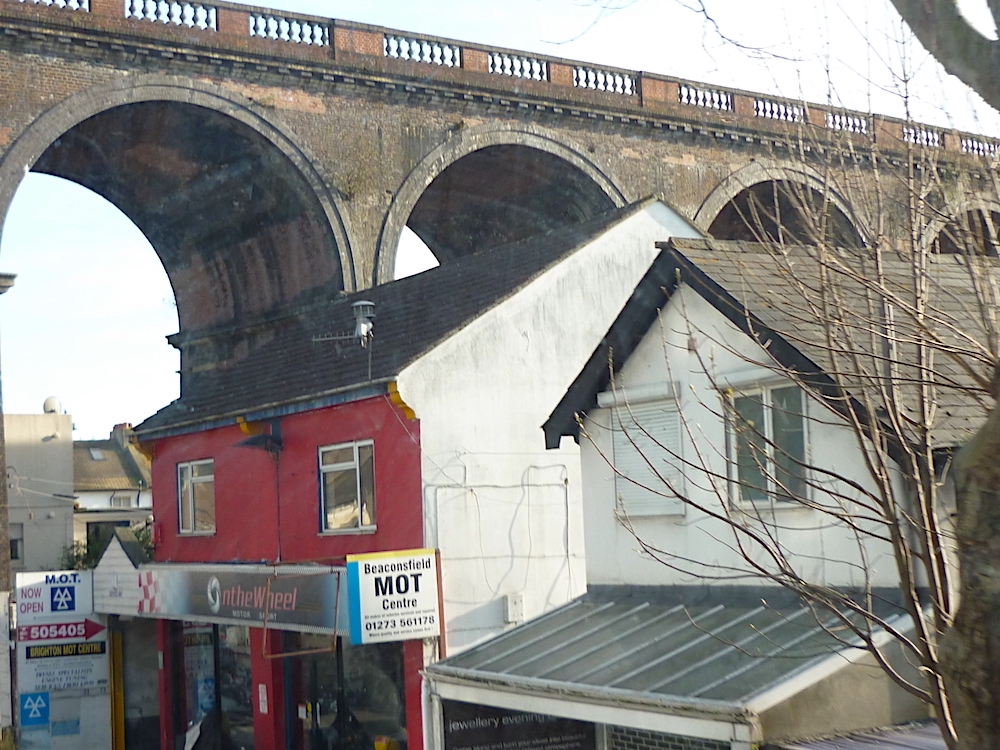
View of the viaduct today, on the Beaconsfield Road going into Brighton. A train can be seen passing over it.
Constructed in ten months and completed in 1846, to the design of the engineer John Urpeth Rastrick (1780-1856), this curved brick viaduct was built to carry the railway track of the South Coast Railway across the steep valley between Brighton and Newhaven. The line still carries trains between Brighton and the nearby town of Lewes.

Another view.
No one can fail to notice the impressive structure when travelling to and from Brighton by road, despite the tremendous amount of building around it. It is Grade II* listed, and its listing text explains that it is "the largest engineering work on the London and Brighton railway branch to Lewes," and that it "consists of an elliptical arch fifty feet wide over Preston Road and 26 round arches thirty feet wide. It extends in a curve for 4 hundred yards from London Road station almost to New England Road." It has survived well, except that one of the piers (the second pier west of Preston Road) needed to be rebuilt after air raid damage.
Links to Related Material
- The Brighton, Lewes, and Hastings Railway, Opened to Lewes (the contemporary report in the Illustrated London News, which gives more technical details)
- The Hodshrove Skew-Bridge across the Lewes Road
Text and photographs by Jacqueline Banerjee. You may use these images without prior permission for any scholarly or educational purpose as long as you (1) credit the photographer and (2) link your document to this URL in a web document or cite the Victorian Web in a print one.
Bibliography
Boase, G. C., and M. W. Kirby. "Rastrick, John Urpeth (1780–1856), civil engineer." Oxford Dictionary of National Biography. 23 September 2004. Online ed. Web. 19 March 2024.
"The Brighton, Lewes, and Hastings Railway, Opened to Lewes." The Illustrated London News. 13 June 1846. Vol. 8: 388-89. Internet Archive. Web. 19 March 2024.
London Road Railway Viaduct, Preston Road. Historic England. Web. 19 March 2024.
Created 17 March 2024